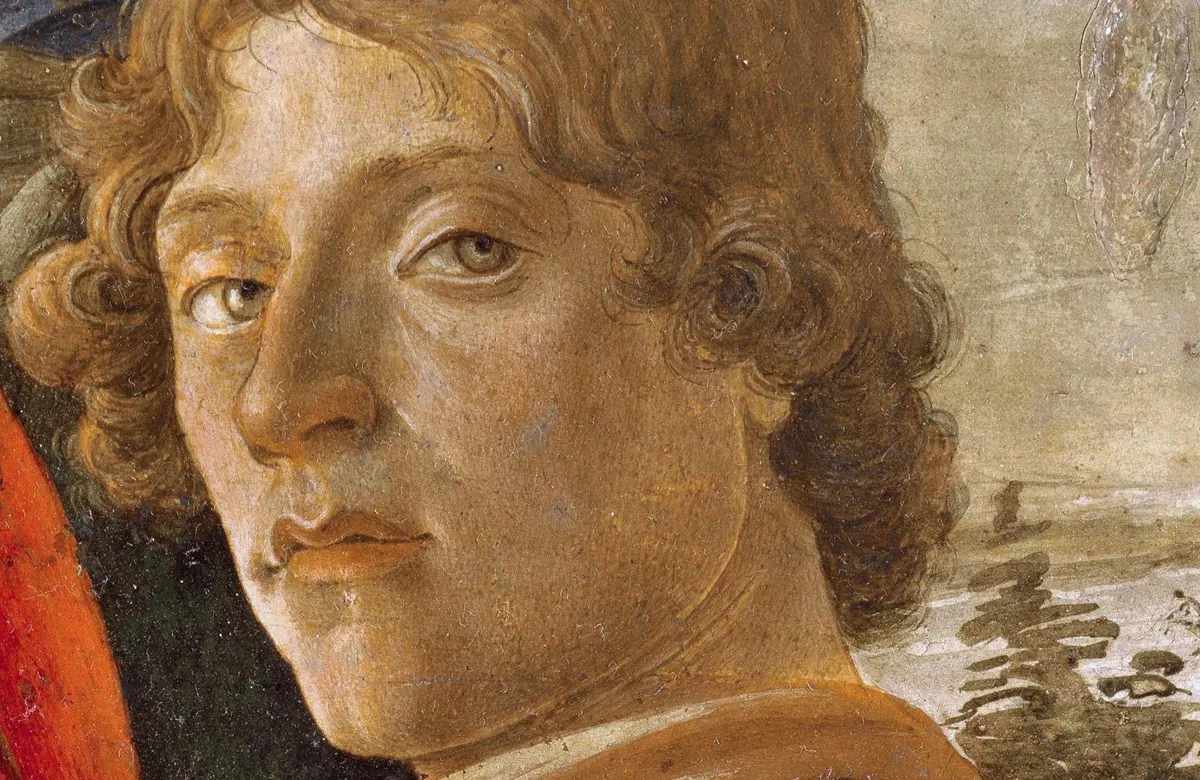Hello, my dear art enthusiasts! 🎨 If Florence is the heart of the Italian Renaissance, then Sandro Botticelli is its poetic soul. During my time in this enchanting city, I found myself captivated by Botticelli’s masterpieces, especially at the Uffizi Gallery, where his timeless works radiate beauty and grace. Let’s dive into the life and legacy of one of Florence’s most celebrated artists, and explore why Botticelli continues to inspire dreamers around the world.
Who Was Sandro Botticelli?
Born Alessandro di Mariano di Vanni Filipepi in 1445, Botticelli grew up in Florence during a cultural and artistic golden age. Nicknamed “Botticelli,” meaning “little barrel,” he apprenticed under the painter Fra Filippo Lippi, whose influence can be seen in Botticelli’s delicate figures and graceful compositions.
Botticelli quickly became a favorite of Florence’s Medici family, painting works that adorned their villas and captured their humanist ideals. His style, characterized by flowing lines, soft colors, and ethereal figures, epitomized the Renaissance belief in beauty and harmony.
Masterpieces That Take Your Breath Away
When you visit the Uffizi Gallery, you’re transported to a world of myth, mystery, and grace through Botticelli’s most iconic works:
- The Birth of Venus
Venus emerges from the sea on a shell, her figure both delicate and powerful. Inspired by classical mythology, this painting celebrates love, beauty, and divine femininity. The soft pastels and flowing lines make it impossible not to pause and admire.
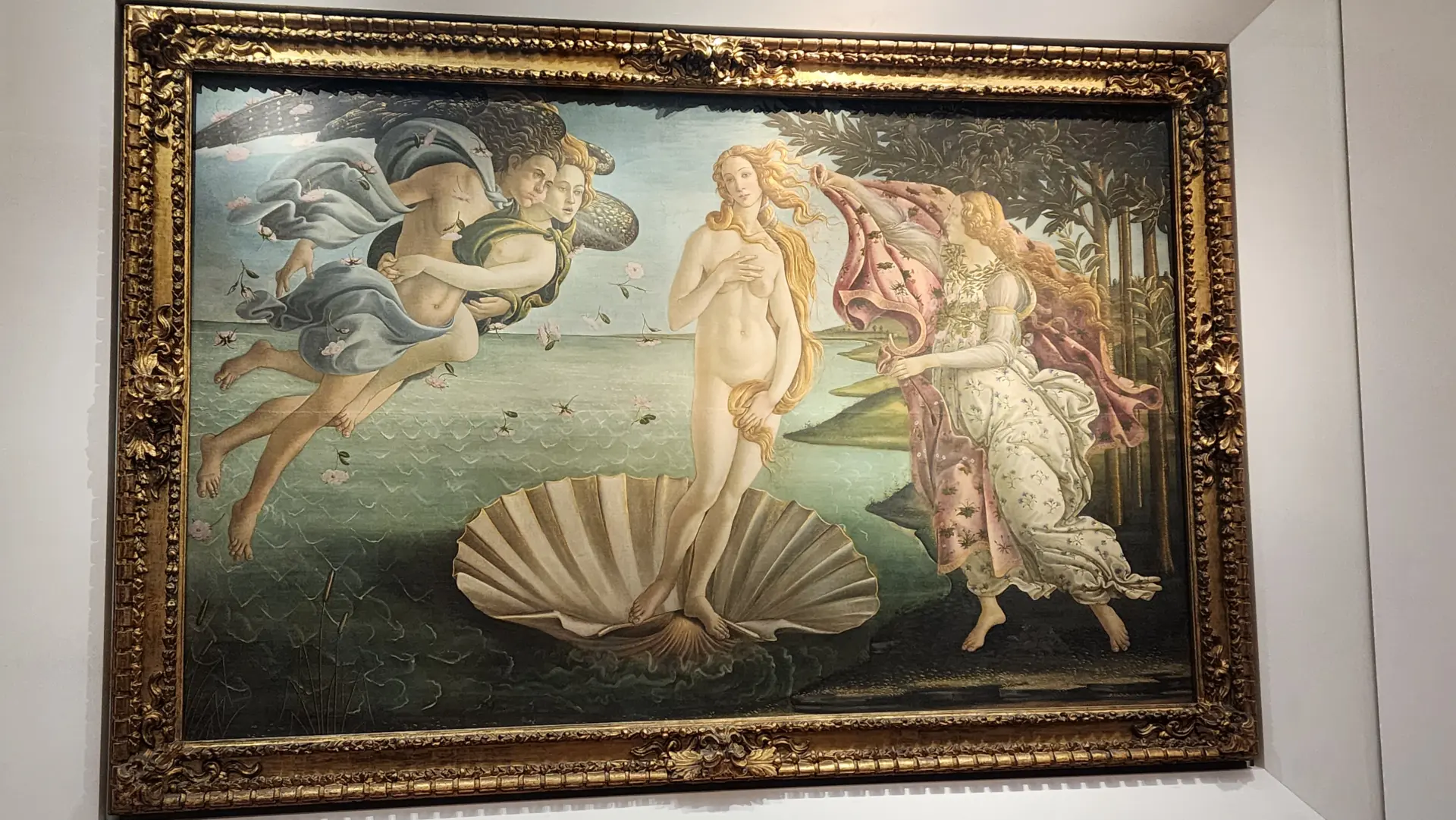
- Primavera (Spring)
A celebration of rebirth and renewal, this allegorical masterpiece depicts Venus in an enchanting grove, surrounded by mythological figures. The intricate details of the flowers, trees, and characters are mesmerizing.
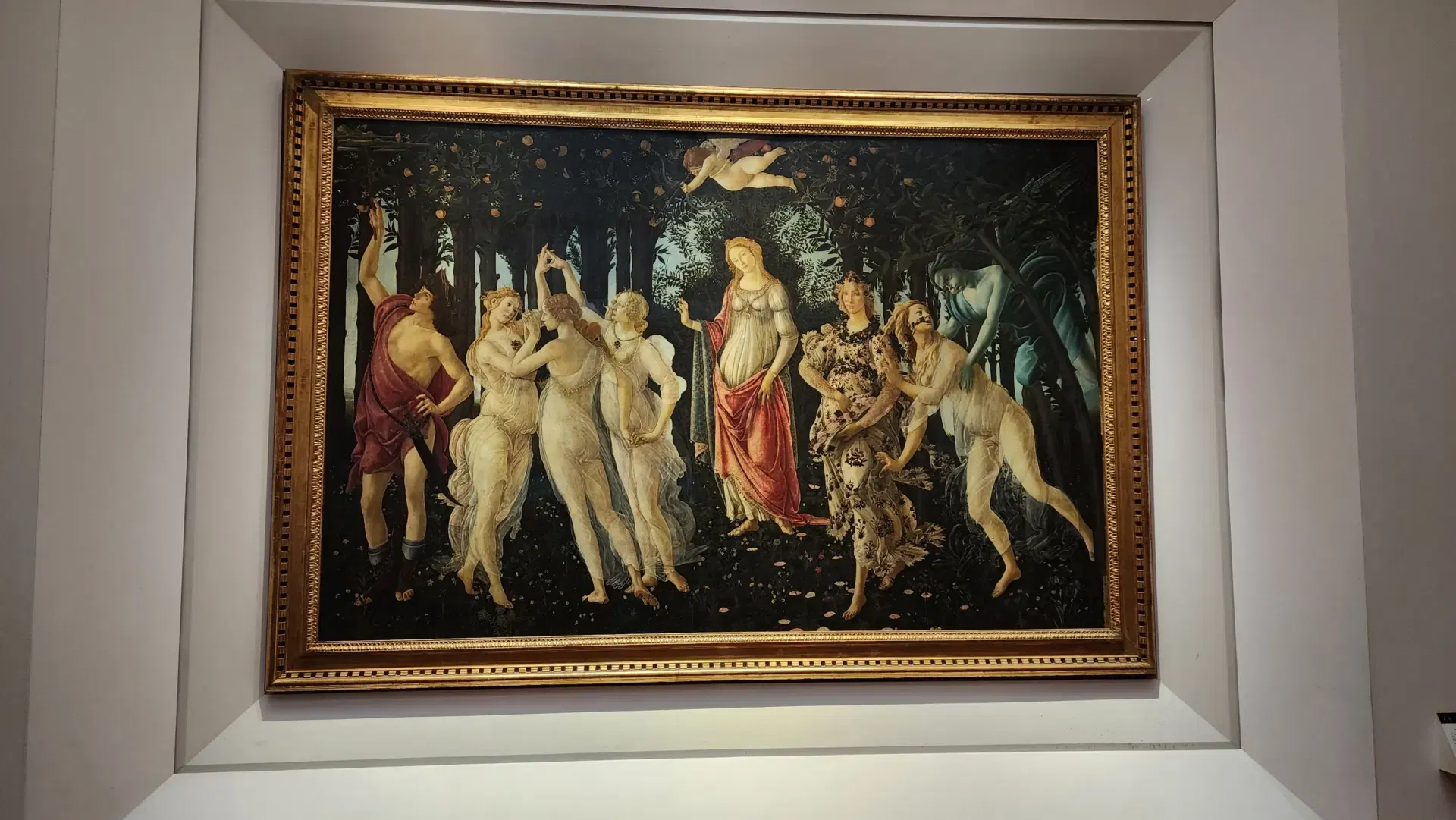
- Venus and Mars
This playful and symbolic painting portrays Venus, the goddess of love, gazing serenely at Mars, the god of war, who appears languid and defeated. The work symbolizes the triumph of love over conflict, with charming details like mischievous satyrs playing with Mars’s armor adding a touch of whimsy.
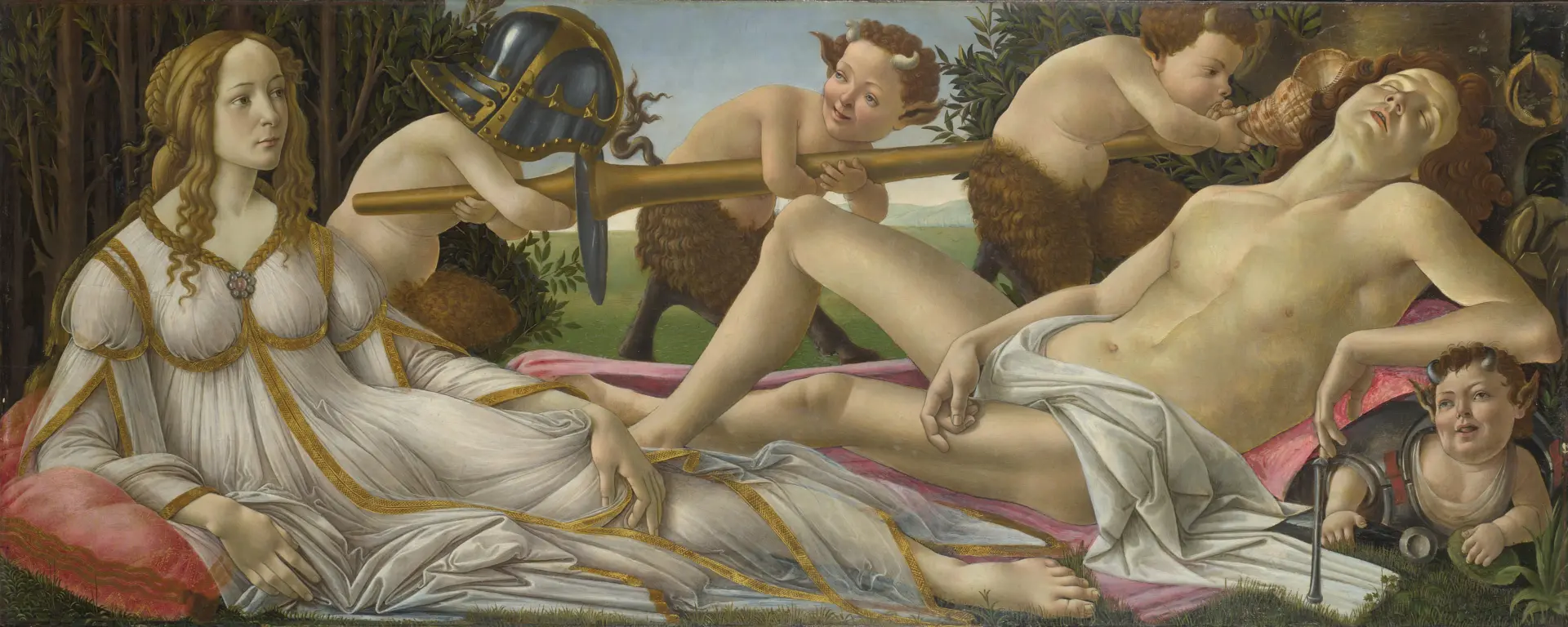
Botticelli’s Role in the Renaissance
Botticelli’s works capture the essence of the Italian Renaissance, blending classical ideals with a deep spirituality. His mythological paintings are imbued with humanist philosophy, while his religious works, like The Adoration of the Magi, reveal a profound reverence for faith.
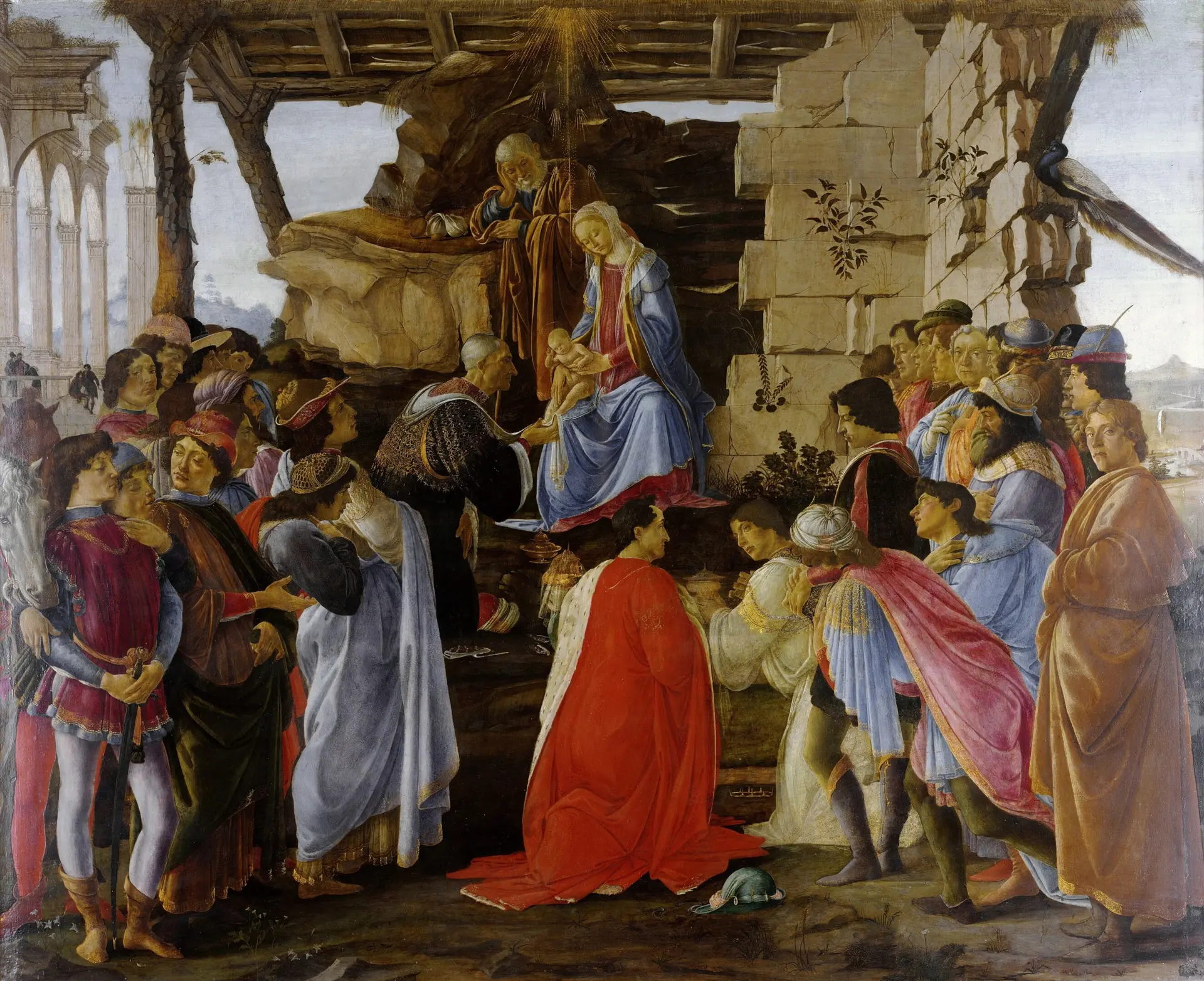
Despite his success, Botticelli’s later years were marked by personal struggles and changing artistic tastes. The rise of Savonarola and a stricter moral climate led Botticelli to destroy some of his own works in the infamous Bonfire of the Vanities.
A Personal Reflection
Standing before The Birth of Venus in the Uffizi Gallery, I felt utterly spellbound, as though I had been transported into Botticelli’s dreamlike world. The gentle curve of Venus’s figure, the flowing golden hair, and the delicate interplay of colors seemed almost otherworldly. It wasn’t just a painting – it was poetry on canvas. I found myself reflecting on the timeless themes Botticelli captured: love, beauty, and humanity’s relationship with nature.
Similarly, gazing at Primavera felt like stepping into an enchanted forest, where myth and reality intertwine. Each figure seemed alive, each flower meticulously painted to evoke wonder and joy. I was particularly drawn to the dancing grace of the Three Graces, their lightness and fluidity seeming to transcend the boundaries of the canvas.
Final Thoughts
Sandro Botticelli was more than an artist; he was a storyteller, a philosopher, and a dreamer who captured the Renaissance in all its glory. His works invite us to pause, reflect, and connect with something larger than ourselves. For me, they were a gentle reminder of the importance of harmony, creativity, and the enduring power of art to inspire the soul.
Visiting Florence without experiencing Botticelli is like sipping wine without savoring its flavor – an incomplete journey. Until next time, keep finding your sparkle in art, history, and beyond! ✨
Xoxo,
Bubbly 🎈

